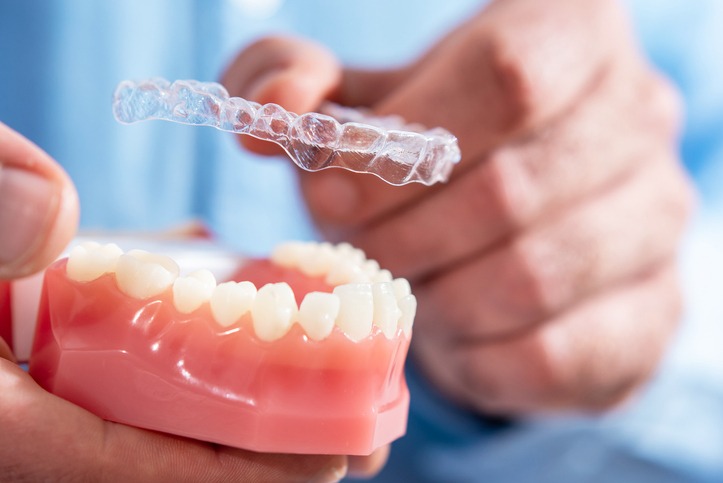You have an appointment at your local downtown dental clinic. During your visit, your dentist informs you of some alignment issues with your teeth that will need treatment. The first image that comes to mind is a mouth full of metal braces. Yet, the dentist informs you of another treatment option – Invisalign.
Yet, what is Invisalign? If you’re unfamiliar with Invisalign, learn more about it before considering it as a potential treatment option.
What is Invisalign?
Invisalign is the opposite of braces in various ways. Unlike braces, Invisalign works to straighten your teeth through clear aligners that are custom-fitted to the mold of your teeth. How does it achieve that? It uses a 3D image of your teeth and data to help determine how to construct your aligners to fix your alignment issues effectively. This more personalized treatment helps straighten your teeth by exerting gentle pressure to help align them correctly.
What Are the Treatment Expectations?
Based on the data collected from your dentist, they will make a treatment plan timeline that will illustrate how many sets of aligners you will need.
Unlike braces, Invisalign can be removed from your teeth. It is intentional to ensure you can swap to the next aligners outlined in your treatment plan. You can expect to wear them consistently every day for two weeks at a time before going onto the next set of aligners.
As you swap more, your teeth gradually shift into a straighter position. Yet, this won’t be effective without ensuring you’re wearing them daily without taking them out often. Best results stem from wearing them for at least 20 to 22 hours per day. If you don’t deviate from your treatment plan, you can expect only to wear Invisalign between 9-12 months.
In cases where patients have minor alignment issues, it’s possible to get results as soon as two months. For the most part, Invisalign is an effective treatment option to help combat minor alignment issues compared to more complicated ones.
What Maintenance Does Invisalign Require?
Compared to braces, Invisalign is easier to maintain than braces. The beauty behind Invisalign is that you can take them out whenever you eat or drink anything. Easy removal means the aligners won’t get damaged and won’t leave you susceptible to tooth decay like braces have been known to cause.
When you take them out, you’re supposed to keep them clean by putting them away into the storage case your dentist gave. Afterwards, you can then put them back on. However, it’s still imperative to keep up with your oral routine of proper brushing and flossing.
Alongside your oral routine, you should maintain the cleanliness of your aligners every night. That means rinsing out your aligners and giving them a gentle scrub. It’s important to do so as it helps to eliminate residue from what you ate earlier in the day.
If not done, this can pose the same issue as braces by leading to tooth decay and even gum disease.
What Are the Benefits of Invisalign?
Learn some of the benefits of Invisalign to help you determine if it might be the best treatment for you.
- Aesthetically pleasing (i.e. clear design makes them unnoticeable)
- Low maintenance (i.e. doesn’t impact oral routine by much)
- Can eat whatever you want
- More comfortable to wear
- Less dentist visits
What Are the Drawbacks of Invisalign?
Invisalign isn’t a completely perfect form of treatment. Like anything, Invisalign does come with its drawbacks. It would help if you considered them before you decided on them.
With Invisalign, you shouldn’t opt for them as a means of treatment if you have more complicated alignment issues. Furthermore, there are other reasons that Invisalign might not be right for you. If you got any dentures, dental implants, and dental bridges done, you wouldn’t be able to use Invisalign. In addition, if the dentist notes you have untreated periodontal (gum) disease, you can expect that Invisalign isn’t in the cards for you as a means of treatment.
Another drawback of Invisalign is it’s a rather expensive form of treatment. They can range between $3,000 and $5,000, which might get more expensive depending on how long you need treatment and how complex your alignment issues.
Also, are you a forgetful person? If you keep forgetting to keep your aligners in, you won’t get the desired results you want from them. Plus, if you’re not willing to do proper maintenance, you can cause oral issues to occur.
For various reasons, Invisalign has proven to be a popular and viable treatment for unaligned teeth. Yet, like any form of treatment, it has some cons to consider. Hopefully, this handy guide has illustrated all you need to know to make an informed decision on whether Invisalign would be best for you!

